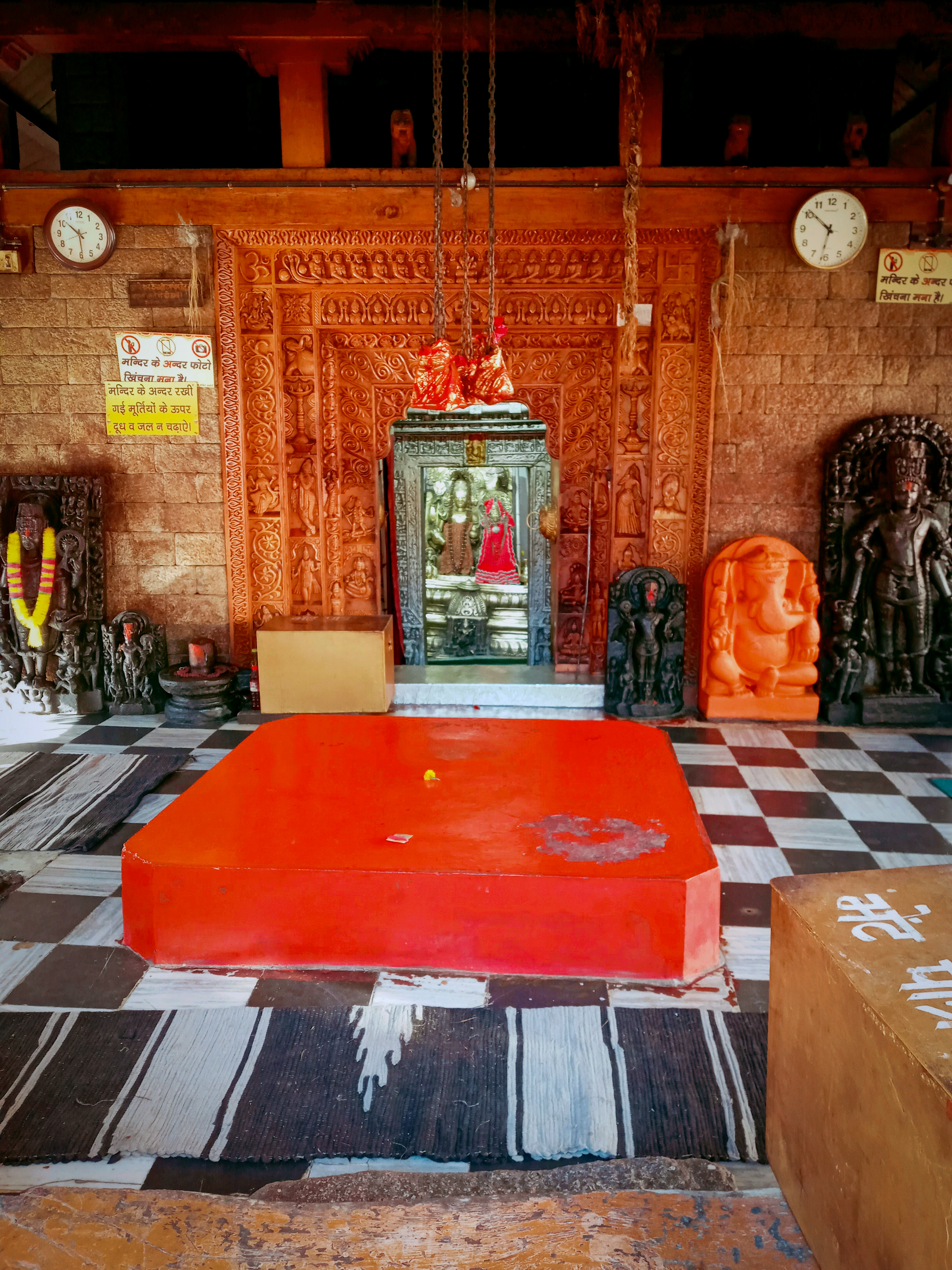Mamaleshwar Mahadev on:
[Wikipedia]
[Google]
[Amazon]
Mamleshwar Mahadev temple is a 



{{coord missing, India Temples in India
Shiva
Shiva (; sa, शिव, lit=The Auspicious One, Śiva ), also known as Mahadeva (; ɐɦaːd̪eːʋɐ, or Hara, is one of the principal deities of Hinduism. He is the Supreme Being in Shaivism, one of the major traditions within Hindu ...
temple located in Karsog
Karsog is a town and municipal area (Nagar Panchayat) in the state of Himachal Pradesh in northern India.
History
Karsog is an ancient town and is described in folk tales of the epic Mahabharata. Karsog is the combination of two words: "Kar" a ...
town of the Mandi district of Himachal
Himachal Pradesh (; ; "Snow-laden Mountain Province") is a state in the northern part of India. Situated in the Western Himalayas, it is one of the thirteen mountain states and is characterized by an extreme landscape featuring several peaks ...
. The Mamleshwar Temple is situated in Karsog valley surrounded by high hills. It is about 100 km from Shimla
Shimla (; ; also known as Simla, List of renamed Indian cities and states#Himachal Pradesh, the official name until 1972) is the capital and the largest city of the States and union territories of India, northern Indian state of Himachal Prade ...
and can be visited throughout the year.

History
According to folk belief, Maharishi Bhrigu meditated here. A Kinnar girl by name Mamlesha used to serve him. This girl was endowed with modesty. Mamlesha Tal was also formed here with the same name. Sage Bhrigu became fascinated by this Kinnar girl Mamlesha. The sage married the girl. Mamlesha fell pregnant to the sage. The sage worshipped Mahakala Shiva to avoid the defect in marriage to amleccha
Mleccha (from Vedic Sanskrit ', meaning "non-Vedic", "foreigner" or "barbarian") is a Sanskrit term, initially referring to those of an incomprehensible speech, later foreign or barbarous invaders as contra-distinguished from elite groups.
The ...
girl. This is how Shiva was established here. From the name of the Kinnar girl - Mamlesha - Shiva was called Mamleshwar and this village became famous as Mamel.
According to folk belief, this temple witnessed ''Satya Yuga
''Satya Yuga'' ( ''Krita Yuga''), in Hinduism, is the first and best of the four ''yugas'' (world ages) in a ''Yuga Cycle'', preceded by ''Kali Yuga'' of the previous cycle and followed by ''Treta Yuga''. ''Satya Yuga'' lasts for 1,728,000 yea ...
'', ''Treta Yuga
''Treta Yuga'', in Hinduism, is the second and second best of the four ''yugas'' (world ages) in a ''Yuga Cycle'', preceded by '' Krita (Satya) Yuga'' and followed by '' Dvapara Yuga''. ''Treta Yuga'' lasts for 1,296,000 years (3,600 divine years ...
'', ''Dvapara Yuga
''Dvapara Yuga'' ( Dwapara Yuga), in Hinduism, is the third and third best of the four ''yugas'' (world ages) in a ''Yuga Cycle'', preceded by ''Treta Yuga'' and followed by ''Kali Yuga''. ''Dvapara Yuga'' lasts for 864,000 years (2,400 divine y ...
'' and now ''Kali Yuga
''Kali Yuga'', in Hinduism, is the fourth and worst of the four ''yugas'' (world ages) in a ''Yuga Cycle'', preceded by '' Dvapara Yuga'' and followed by the next cycle's '' Krita (Satya) Yuga''. It is believed to be the present age, which is ...
''. It is a sacred place where Rishi Bhrigu meditated. During the exile period, the Pandavas
The Pandavas (Sanskrit: पाण्डव, IAST: Pāṇḍava) refers to the five legendary brothers— Yudhishthira, Bhima, Arjuna, Nakula and Sahadeva—who are the central characters of the Hindu epic ''Mahabharata''. They are acknowledg ...
constructed the outer part of the temple. A demon was living nearby in a cave. The villagers were bound to send one person daily as a food for the demon. One day a mother was weeping because that day it was the turn of her son. At that time, the Pandavas were guests of that house. Then Bhima told the mother not to worry about it. He told, "I will go to the Demon". In the battle with demon, Bhima killed him in a place called "lyad" and returned. Then the Pandavas made an ''akhand dhuna'' (eternal fire) in memory of this victory and the demon got moksh
Major attractions
Nestled in the Himalayas, the temple is situated in Karsog, a picturesque small town in Mandi district of Himachal Pradesh. It is believed that the 'Agni Kund' (sacred fire) was lit by the Pandavas - the five acknowledged sons of Pandu as mentioned in the epic of Mahabharata - around 50 centuries ago and has been burning ever since. Locals are of the belief that the Pandavas lit this fire pit in the month of Sravana - the fifth month in the Nanakshahi calendar and in the Hindu calenda
5000-year-old wheat grain
There are many other things that exist in the temple premises associated with the Mahabharata period. One of them is the five thousand years old wheat grain that weighs is 250 grams. It is believed that the Pandavas had grown the grain to eat during their period of agyatvas.Bhima's drum
Locals say that a dhol, drum was built by Bhima himself which he used to play during his free time. According to another belief about this drum, this drum is made from a huge bekhal tree. This bekhal tree was in a village nearby, in which a demon lived. The demon was slain by the gods and huge drums were made from that tree by cutting it into pieces. This drum is said to be one of them.
References
Reference is a relationship between objects in which one object designates, or acts as a means by which to connect to or link to, another object. The first object in this relation is said to ''refer to'' the second object. It is called a ''name'' ...
{{coord missing, India Temples in India